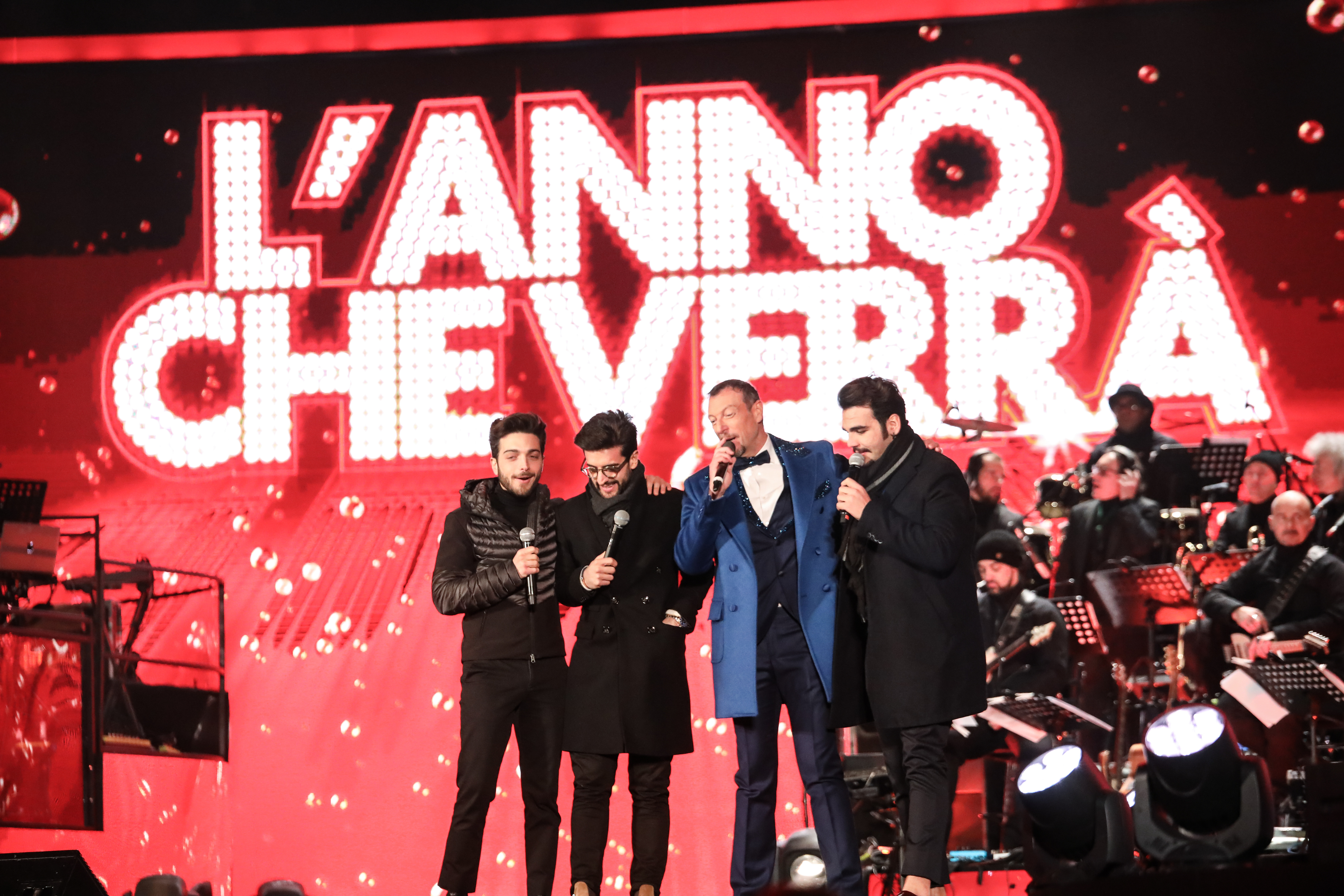
- Television
Happy (TV) Holidays Around the World
Despite the fracturing of television audiences around the world, the holiday season is one in which broadcasters and online platforms can count on increased viewership in December as people take off from work and those in cold countries stay home in front of the television. In a survey done by globalwebindex.com in 2018, 73% of TV viewers say they watch festive movies and specials, while 40% prefer sports programming. There are certain TV programs that are traditional to watch even for the occasional viewer, so programmers depend on the increased eyeballs and ad revenues thus generated at this time of the year.
Here is a roundup of some interesting holiday programming from around the world.

Mrs. Brown’s Boys
bbc/bbc america
In 1992, Irishman Brendan O’Carroll created a character called Agnes Brown which he played in drag in a series of plays, books, and radio shows. Then the BBC came calling and a TV show was born, with O’Carroll playing the potty-mouthed Irish matriarch who meddles in the lives of her six children, and the Christmas episode of the series Mrs. Brown’s Boys became the most-watched show on Irish TV. The conceit of the show is that mistakes like forgotten lines and other fumbles by the cast are never edited out and sometimes actually instigated. And then there is the swearing. O’Carroll said in an interview when beseeched by the BBC to clean up his language so the show could air on prime time, “I don’t want to be a big star. I never wanted to be a big star. I never did.” Well, he became one anyway, with the Christmas specials broadcast in Canada, New Zealand, South Africa, Iceland, Australia and in the US on Comedy Central and BBC America. A review by the Independent said, “To love Mrs. Brown, one must be thrilled by a man in a hairnet and dinner lady tabard saying the F-word roughly once every ten minutes, egged on by a loyal studio audience so whipped to hysteria by him that one can hear pants being soiled and spleens exploding with mirth.” This year’s holiday episodes are entitled A Wonderful Mammy and Orange is the New Mammy.

Kohaku Uta Gassen (Red and White Song Contest)
nhk
Since Soviet times, Russian television puts on a variety show called Goluboy Ogonyok, or Little Blue Light. (The blue light refers to the light of the TV screen cathode ray tube.) The special first aired in 1962 featuring cosmonaut Yuri Gagarin. It typically followed the New Year’s speech by a Communist Party official. The program went off the air in the ’80s but has been revived since 1997, and every Russian TV fan sits in front of their set for three hours every New Year’s Eve to enjoy skits and sketches and songs by Russian pop stars and television celebrities.
Every New Year’s Eve in Japan, the Red and White Song Contest, or Kohaku Uta Gassen, features two teams of singers divided by gender who face off to win prizes on the TV channel NHK. The broadcast is live on TV and radio and has been an annual tradition since 1953 when it was only on radio. The TV audience and a team of judges decide the winner, and the performers are all famous Japanese artists. Being on the show is considered a highlight of a singer’s career and special attention is paid to the costumes, makeup, choreography, and accompanists.

L’Anno Che Verrà (The Coming Year)
getty images
Italy’s tradition is the show L’Anno Che Verrà (The Coming Year), a four-hour New Year’s Eve variety show put on in different cities every year and broadcast by RAI. It features the biggest Italian musical acts, comedians and TV celebrities. 2018 featured diva Patty Pravo, Eurodance band Corona and classical pianist Matthew Lee. In 2019, the celebration airs from Rome and will be heard on Rai Radio 1 as well. It follows the annual New Year’s address of the Italian president.
Czechs call Christmas Eve Štědrý den or Generous Day, and one of the traditions in the Czech Republic is to watch fairy tales on television, featuring princes and princesses, dragons and devils, goblins and ghosts. The most popular one is 1973’s The Three Gifts for Cinderella which has been aired every year ever since, and this tradition is credited with saving the popularity of fairy tales for Czech children.
Netflix has a fine Norwegian Christmas series called Home for Christmas which revisits the tired trope of the singleton home for Christmas in a funny and fresh way, so the humor is not lost despite the subtitles. 30-year-old divorcee Johanne (Ida Elise Broch) is relegated to the kids’ table in her family’s home when they gather for the holidays because she has no partner. In desperation, she announces the existence of a fictional boyfriend and then has a deadline to produce him. The six-part series has fans already clamoring for a second season.
Since 2001, the Netherlands counts down the holidays on a television program called Sinterklaasjournaal that lasts several days, culminating with a live televised Christmas parade featuring Sinterklaas’ annual arrival, along with his helper, a controversial character called Zwarte Pieten or Black Pete, an actor in blackface. Black Pete is based on a children’s story from the 19th century and has traditionally sported golden earrings, an afro wig, and red lipstick to accompany the blackface. Protests against the implicit racism have raged in the country for years, and finally, in 2019, the TV channel NTR backed down to pressure — Black Pete will now be called Chimney Pete, have a “sooty face,” no afro and no earrings. The “Kick Out Black Pete” movement worked for the television show at least.